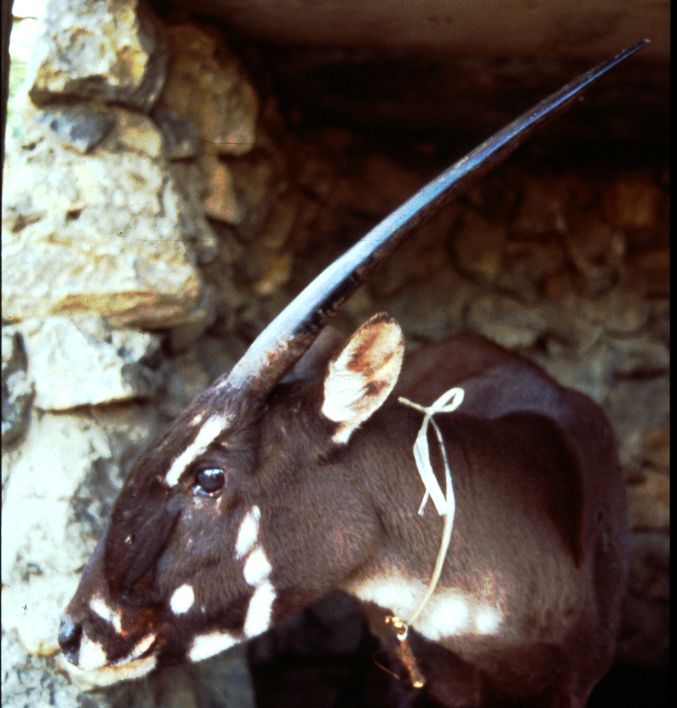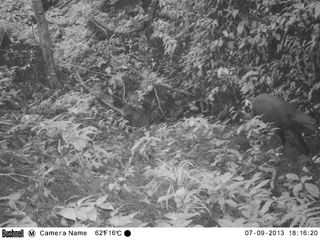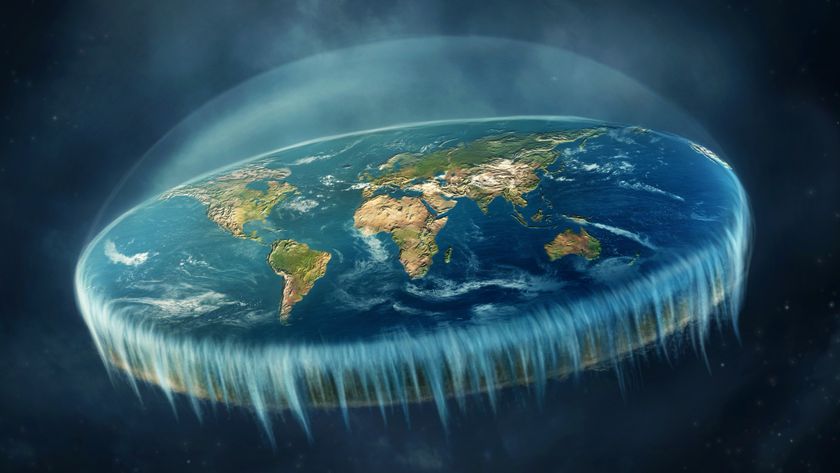
Rarely Seen 'Asian Unicorn' Caught on Camera

One of the most secretive creatures on Earth — the saola — has been photographed in Vietnam for the first time in 15 years.
Scientists first discovered the saola in 1992 in Vietnam near the country's border with Laos. It was the first large mammal new to science in more than 50 years. But since its discovery, the elusive creature has rarely been seen in the wild, earning it the nickname the "Asian unicorn" (even though it has two long horns instead of one).
A lone saola was documented this past September by a camera trap set up in the Central Annamite Mountains by the World Wildlife Fund (WWF) and Vietnamese wildlife officials. [Rare Images of the Saola, One of Earth's Most Elusive Mammals]
"When our team first looked at the photos we couldn't believe our eyes," Van Ngoc Thinh, head of the WWF in Vietnam, said in a statement. "Saola are the holy grail for Southeast Asian conservationists so there was a lot of excitement. This is a breath-taking discovery and renews hope for the recovery of the species."
Though the beast is more closely related to wild cattle, it resembles an antelope with two sharp horns that can reach up to 4 feet (1.2 meters) in length.

The last time a saola was spotted in the wild was 1999, but it hasn't been seen in Vietnam since 1998. In 2010, villagers in the Laos province of Bolikhamxay caught a saola, but the animal died shortly after capture.
WWF conservationists say they are working with Vietnamese partners to protect saolas from illegal hunting.
Sign up for the Live Science daily newsletter now
Get the world’s most fascinating discoveries delivered straight to your inbox.
"Saola are caught in wire snares set by hunters to catch other animals, such as deer and civets, which are largely destined for the lucrative illegal wildlife trade," Van Ngoc said. He added that 30,000 snares have been removed from the saola habitat since 2011 and more than 600 illegal hunters' camps have been destroyed.
"Confirmation of the presence of the saola in this area is a testament to the dedicated and tireless efforts of these forest guards," Van Ngoc said in a statement.
Scientists suspect that no more than a few hundred or a few dozen saola exist in the wild, but they have not been able to come up with a precise population estimate. The species is listed as critically endangered by the International Union for Conservation of Nature.
Follow Megan Gannon on Twitter and Google+. Follow OurAmazingPlanet @OAPlanet, Facebook and Google+. Original article on LiveScience's OurAmazingPlanet.













